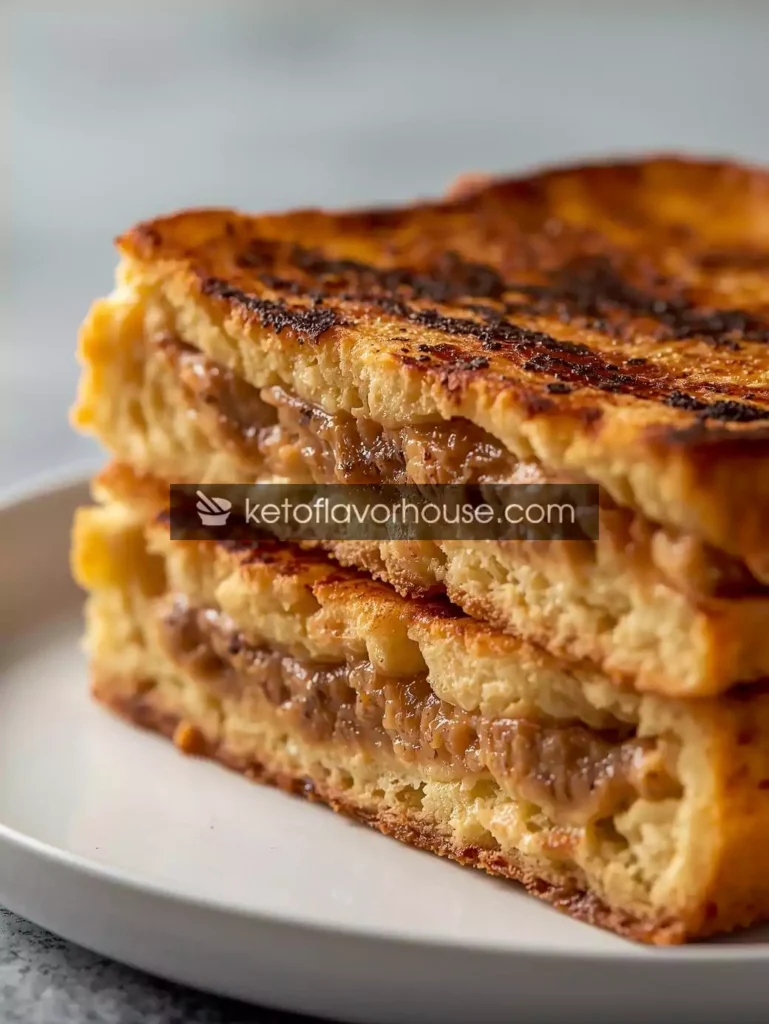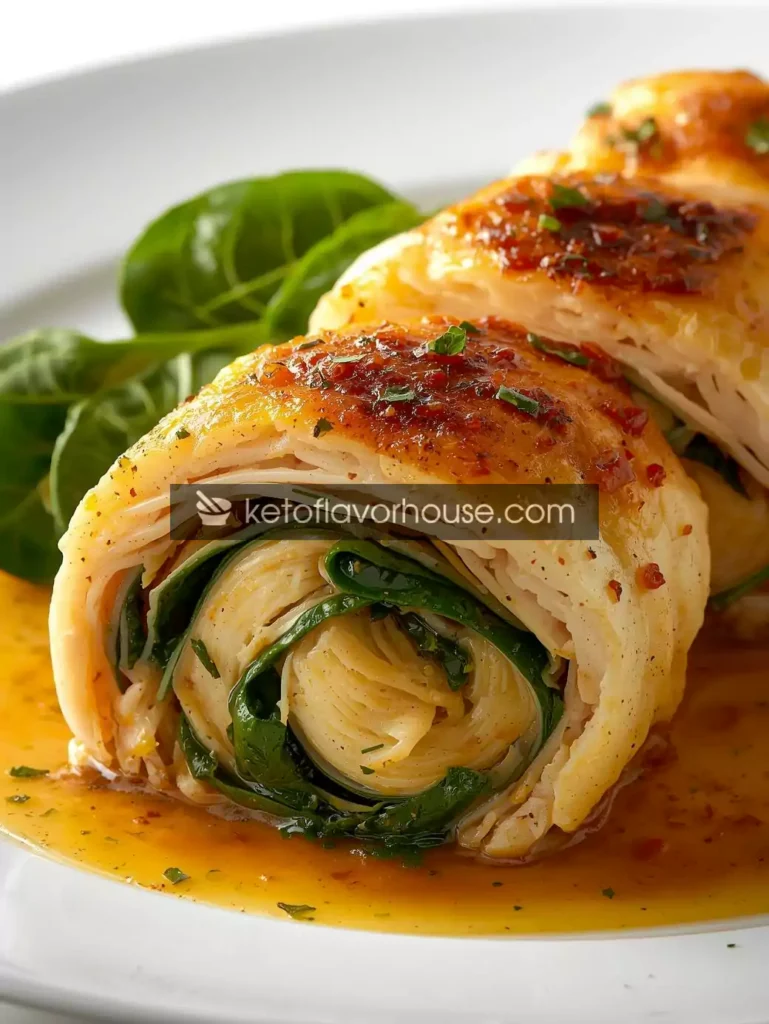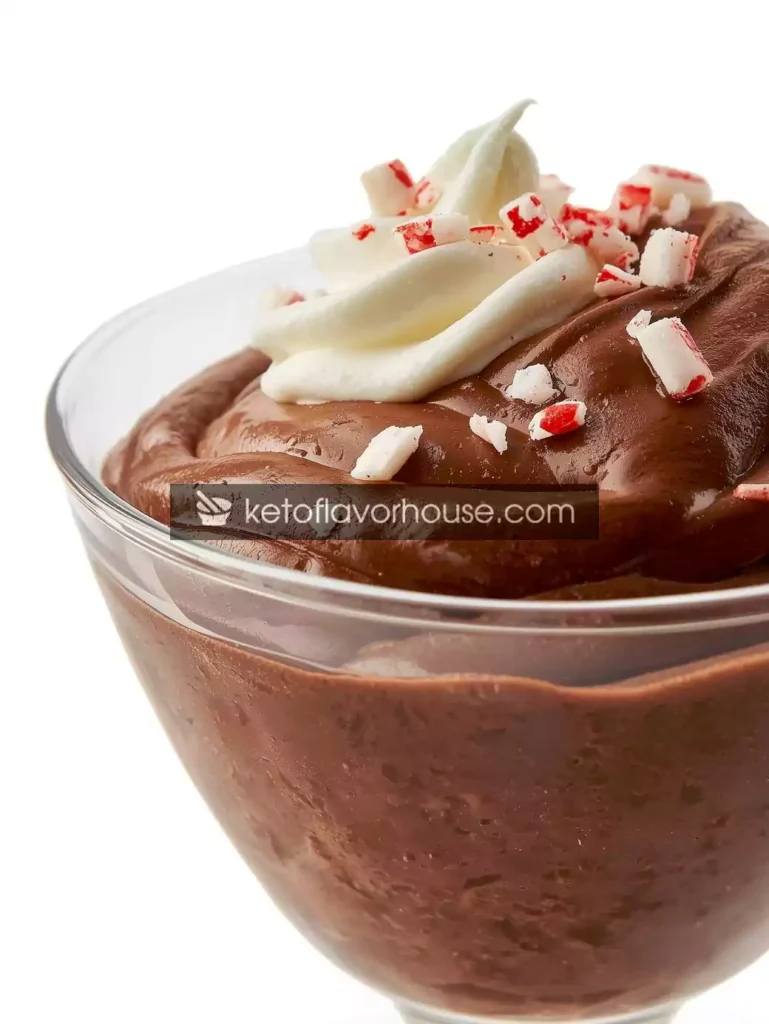This post may contains Amazon affiliate and other affiliate links. If you make a purchase through these links, I may earn a small commission at no extra cost to you. Your support helps me continue to provide quality content. I only recommend products I personally trust and believe will add value to your experience. For more details, please visit my Privacy Policy.
Introduction
If you’re searching for a cozy, protein-packed dinner that supports recovery and weight goals, this Bariatric Chicken Casserole Recipe is the kind of comfort food that quietly does its job: it fills you up without weighing you down. I developed this recipe during the first months after surgery when I wanted something warm, spoonable, and reliably gentle on the stomach — but still full of flavor. The casserole combines tender shredded chicken, soft cauliflower “rice,” and a creamy, cheesy binder that melts into every bite. It’s the kind of dish that makes chilly evenings feel manageable and meal-prep weeks far more pleasant.
This dish is perfect for folks following a post-op bariatric plan, anyone on a low-carb approach, and busy home cooks who want an easy, family-friendly dinner that doubles as weekday leftovers. Read on — I’ll walk you through why it works for bariatric eaters, exactly what tools you need, ingredient swaps, step-by-step preparation, and smart make-ahead and storage tips.
Why You’ll Love This Recipe
- 🍗 High-protein — supports healing and satiety
- 🥦 Low-carb — cauliflower base keeps net carbs low
- 🥘 One-dish comfort — minimal hands-on time, big payoff
- ⏱️ Meal prep friendly — reheats beautifully and freezes well
- 👨👩👧 Family-approved — mild, cheesy, and approachable for all ages
My Personal Experience
After surgery I remember craving casseroles — warm, soft, uncomplicated food that felt safe. The first time I adapted this recipe, I was experimenting with cauliflower instead of rice and Greek yogurt instead of cream. The results surprised me: the casserole was creamy, soft, and satisfying without the heaviness I dreaded. My first bite was warm and cheesy, with just enough seasoning to feel homey. I portioned it into containers for the week and discovered reheated slices comforted me on busy afternoons. That little win — a practical, tasty meal I could count on — is why I keep this recipe in heavy rotation.
Required Equipment
Baking Dish (9×13-inch or similar)
A medium-to-large oven-safe dish holds the casserole in a single layer for even baking. Glass or ceramic works best for even heating and presentation.
Large Skillet or Sauté Pan
Used to cook the vegetables and combine the chicken with the creamy binder before baking. A non-stick skillet reduces need for excess oil.
Mixing Bowl
For combining shredded chicken, yogurt, spices, and cheese. A roomy bowl makes mixing easy without spillage.
Cutting Board & Sharp Knife
Needed for chopping onions, garlic, and any veggies. A sharp knife ensures clean, even cuts which cook uniformly and are easier to chew post-op.
Measuring Cups & Spoons
Accurate portions matter when managing calories, protein and sodium for bariatric eating plans.
Oven (or Air Fryer for small portions)
An oven gives the classic baked-top texture; an air fryer can finish individual portions quickly with a golden top.
Ingredients & Substitutions
Makes 4 generous servings (adjust as needed for meal prep).
- 1 lb (450 g) cooked, shredded chicken breast — Lean, high-protein base that’s easy to chew. Substitute: cooked turkey breast or rotisserie chicken (trim skin) for variety.
- 4 cups cauliflower rice (about 1 medium head) — Low-carb, soft when cooked; mimics rice texture. Substitute: riced broccoli or a 50/50 mix of riced vegetables for lower-carb volume.
- 1 cup finely chopped broccoli florets — Adds fiber and micronutrients with a soft bite once baked. Substitute: zucchini or spinach (squeeze excess water).
- 1 small onion, finely diced (about ½ cup) — Builds savory flavor; use less if sensitive to FODMAPs. Substitute: green onion tops or chives for milder taste.
- 2 cloves garlic, minced — Aroma and depth. Substitute: ¼–½ tsp garlic powder if fresh is too strong.
- 1 cup low-fat Greek yogurt — Creamy binder with extra protein, gentle on digestion. Substitute: low-fat cottage cheese (blended smooth) or unsweetened plain kefir in a pinch.
- 1 cup reduced-fat shredded cheddar — Melts and creates the cheesy comfort many crave. Substitute: part-skim mozzarella or a blend for milder flavor.
- ¼ cup grated Parmesan — Umami boost that keeps overall cheese usage lower. Substitute: nutritional yeast for dairy-free option.
- ½ cup low-sodium chicken broth — Keeps the casserole moist without excess fat. Substitute: vegetable broth or water with a splash of lemon for brightness.
- 1 tbsp olive oil — For sautéing veggies with minimal added fat. Substitute: avocado oil.
- 1 tsp dried thyme — Warm, subtle herb that pairs with chicken. Substitute: oregano or rosemary (use sparingly).
- ½ tsp smoked paprika — Adds smokiness without sugar. Substitute: regular paprika + a pinch of cumin.
- ½ tsp salt (or to taste) — Keep sodium in check for post-op diets; use less if advised by your team.
- ¼ tsp black pepper — Balances flavor. Substitute: white pepper if needed.
- 2 tbsp chopped fresh parsley (optional, for garnish) — Freshness and color. Substitute: chives or cilantro.
Why each ingredient matters for bariatric: lean chicken keeps protein high without excess fat; cauliflower and broccoli add volume and fiber with low net carbs; Greek yogurt supplies protein and creaminess with less fat than heavy cream; low-sodium broth controls salt while keeping moisture; reduced-fat cheeses give melty satisfaction while keeping calories moderated.
How to Make Bariatric Chicken Casserole Recipe
H2 — How to Make the Bariatric Chicken Casserole Recipe
Step 1 — Preheat & Prep
Preheat oven to 375°F (190°C). Lightly grease the baking dish or line with parchment for easy cleanup. Shred cooked chicken if not already prepared and chop vegetables into small, even pieces.
Mini-tip: Using precooked chicken (rotisserie or poached) speeds this recipe to under 30 minutes total hands-on time.
Step 2 — Sauté Aromatics and Veggies
Heat 1 tbsp olive oil in a large skillet over medium heat. Sauté diced onion for 3–4 minutes until translucent, then add garlic, chopped broccoli and cauliflower rice. Cook 5–7 minutes until the vegetables soften and any excess moisture evaporates. Stir in smoked paprika and thyme.
Mini-tip: Cook veggies until tender but not mushy — they’ll continue to soften in the oven.
Step 3 — Mix the Filling
Transfer the sautéed vegetables to the mixing bowl. Add shredded chicken, Greek yogurt, ¾ cup shredded cheddar, Parmesan, chicken broth, salt and pepper. Stir until everything is well combined.
In-step tip: If the mixture seems dry, add up to 2 tbsp more broth — you want a creamy but scoopable consistency.
Step 4 — Assemble & Bake
Spoon the mixture into your prepared baking dish, smoothing the top. Sprinkle the remaining ¼ cup cheddar over the surface. Cover loosely with foil and bake 18–22 minutes. Remove foil and bake another 6–8 minutes until the cheese is bubbly and golden at the edges.
Air fryer variant: Divide into 4 small ramekins, top with cheese, and air fry at 350°F (175°C) for 8–10 minutes until hot and bubbly.
Stovetop-to-oven variant: Sear the top in a broiler-safe skillet then transfer to oven to finish if you like a crispier top.
Step 5 — Rest & Serve
Let rest 5 minutes (important for post-op texture and portioning). Garnish with chopped parsley. Serve warm in controlled portion sizes.
Encouragement: Don’t worry if your casserole isn’t perfect the first time — seasoning and texture can be adjusted easily in future batches.
Common Mistakes to Avoid
- Overcooking the chicken: dries the protein; use cooked chicken that’s not already overcooked.
- Too much liquid: makes the casserole soggy — aim for a creamy, not runny, binder.
- Large vegetable pieces: they won’t soften enough for post-op chewing — chop small.
- Skipping the rest time: slicing immediately causes the filling to run.
Pro Tips for Best Results
- Use freshly shredded cheese (melts better than pre-shredded).
- Make ahead: assemble cold, cover, and bake later — perfect for busy days.
- For extra flavor without carbs, add roasted red pepper purée or a splash of lemon juice.
- Use low-sodium ingredients and taste before adding salt — cheese and broth can add a lot.
Bariatric Nutrition & Strategy
Protein is central to post-op nutrition: it supports healing, preserves lean muscle, and promotes satiety. Each serving of this casserole provides a concentrated protein source (chicken + Greek yogurt + cheese) while keeping carbs low via cauliflower rice. The soft texture reduces chewing strain and the small portions help with post-op portion control. Pair one serving with a light side of steamed greens or a small mixed salad for balance.
Fitting it into a day: have the casserole as your main protein at lunch or dinner. For earlier post-op stages, ensure chicken is well-shredded and portions are small. Always follow your surgical team’s recommendations about food textures and portion sizes.
Variations You Can Try
- Mediterranean: Add chopped sun-dried tomatoes, olives, and oregano; swap cheddar for feta.
- Buffalo-style: Stir in 2 tbsp hot sauce (if tolerated) and top with a light drizzle of blue cheese yogurt.
- Herbed lemon: Add lemon zest and fresh dill for brightness.
- Lower-dairy: Use blended cottage cheese and nutritional yeast instead of cheddar and Parmesan.
Each variation tweaks flavor and micronutrients; for bariatric diners, keep portion sizes consistent and note how added ingredients (sauces, olives) affect sodium and calories.
Tips for This Recipe
- Slice into 4 or 6 portions depending on your daily protein targets.
- Plate with color contrast (greens, herbs) to make the meal more visually appealing and appetizing.
- Label meal-prep containers with date and portion so you stay organized.
Optional Additions
- Sautéed mushrooms (umami)
- Spinach stirred in (extra micronutrients)
- A small sprinkle of toasted nuts or seeds on top for crunch (if tolerated)
Serving Ideas
- Weeknight family dinner with steamed green beans.
- Portion-controlled lunches: pack a single serving with raw cucumber slices.
- Potluck entry: bake in a ceramic dish and bring warm — most will enjoy the mild, cheesy comfort.
Storage Recommendations
- Fridge: Store airtight up to 4 days. Reheat gently in microwave or oven.
- Freezer: Freeze single portions up to 2 months. Thaw in fridge overnight and reheat.
- Reheating tip: Add a splash of broth when reheating to restore creaminess and avoid dryness.
Frequently Asked Questions (FAQ)
1. Can I freeze this casserole?
Yes — portion into meal-sized containers and freeze for up to 2 months. Thaw overnight before reheating.
2. Can I use rotisserie chicken?
Absolutely. Remove skin and shred; rotisserie works well for time-saving.
3. Is this safe for early post-op stages?
Check with your care team — textures can be softened (extra shred, purée veggies) for early stages. Focus on small portions.
4. Can I make it dairy-free?
Yes — use blended cottage cheese substitutes, dairy-free yogurt, and vegan shredded cheese. Texture will differ slightly.
5. Can I use rice instead of cauliflower?
You can, but it increases carbs significantly; for strict low-carb bariatric plans, cauliflower is preferred.
6. How can I boost protein further?
Stir in a scoop of savory unflavored protein powder mixed into the yogurt, or add more shredded chicken.
7. Air fryer or oven — which is better?
Oven is best for a whole casserole; air fryer works great for single-serve ramekins with a crisp top.
Nutritional Breakdown (Estimated per serving — 4 servings)
- Calories: ~435 kcal
- Protein: ~42 g
- Fat: ~21 g
- Total Carbs: ~9 g
- Fiber: ~3 g
- Net Carbs: ~6 g
- Sugar: ~4 g
- Sodium: ~520 mg
(Nutrition values are approximate and will vary based on exact ingredients used.)
Recipe Snapshot
- Prep Time: 15 minutes
- Cook Time: 30–35 minutes
- Total Time: 45–50 minutes
- Course: Main Dish
- Cuisine: Comfort / Bariatric-Friendly
- Servings: 4
- Calories (per serving): ~435 kcal

Bariatric Chicken Casserole Recipe
Ingredients
- 1 lb cooked shredded chicken breast
- 4 cups cauliflower rice
- 1 cup chopped broccoli florets
- 1 small onion diced
- 2 cloves garlic minced
- 1 cup low-fat Greek yogurt
- 1 cup reduced-fat shredded cheddar
- ¼ cup grated Parmesan
- ½ cup low-sodium chicken broth
- 1 tbsp olive oil
- 1 tsp dried thyme ½ tsp smoked paprika, ½ tsp salt, ¼ tsp pepper
- 2 tbsp chopped parsley optional
Instructions
- Preheat oven to 375°F (190°C). Grease a 9×13-inch dish.
- Sauté onion in oil until translucent; add garlic, cauliflower rice and broccoli; cook 5–7 min.
- In a bowl, combine veggies with shredded chicken, yogurt, ¾ cup cheddar, Parmesan, broth and spices.
- Spread mixture in prepared dish; top with remaining cheddar. Cover and bake 18–22 min; uncover and bake 6–8 more minutes.
- Rest 5 min, garnish with parsley, and serve.









